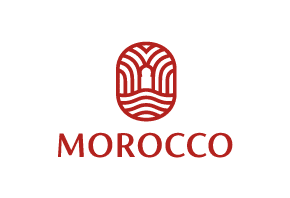European tourism Gardens of Eden no 24: Destinations get new lives

Regenerated destinations: new life new tourism new tourists: Hungary: Greece: France and Estonia
Mecsek (Hungary)
The Mecsek region is situated in the southern part of Hungary. Its defining features are a green landscapes, vineyards and Mediterranean climate. Fig, almond and chestnut trees are very common here due to mild temperatures. There are several cities and towns to explore in the region, such as: Pecs, a Roman city, with buildings that date back to the second century, and Villany, a small town best known for its wines. The Mecsek region offers countless possibilities for active, as well as cultured holidaymakers. The region is renowned not only for its beautiful scenery, but also for its historical and cultural heritage. There is something for everyone to explore.
Regeneration and revival
Several projects were initiated to increase the breadth of tourist attractions in the region. Mecsek’s disused industrial and cultural heritage sites were renovated and given a new purpose. The Benedictine cloister, a castle in Pecsvarad, famous for its healing qualities, has now been converted into a museum and a hotel. One of the most prominent transformations that took place in the city of Pecs was the new culture and art quarter, built around the famous Zsolnay Factory. Today, the old factory still produces its famous porcelain. But there is also now space for exhibitions and presentations, a visitors’ centre providing information about cultural events and activities, numerous cafes as well many other amenities. Over 200,000 visitors come to the Zsolnay Cultural Quarter every year. With different parts of the quarter dedicated to different activities, it has been one of the most impressive success stories in the region. Another highlight is Orfű, a resort with lakes, forests and beautiful parks. There are significant developments in progress here, such as an aqua park, water-tourism centre, an open courtyard and cycle paths. There is also a Mill Museum, where millers mill wheat and sell homemade bread.
Municipality of Delphi (Greece)

Municipality of Delphi According to legend, when Zeus sent out two eagles from the ends of the universe to find the ‘omphalos’, the centre of the world, they met in Delphi. The Delphi region at the south-western spur of Mount Parnassus is an enchanting destination in the heart of Greece. It is a place of harmony and serenity, where the sea meets a jagged coastline, capes, islets and mountains. It is a place of great contrasts; with snowy-white mountain peaks which run down to beaches and crystal clear waters. The municipality of Delphi unites several regions: Amfissa, Delphi, Desfina, Galaxidi, Itea, Gravia, Parnassos and Kallieon. Each region tells a different story and offers an array of tourist attractions.
The regeneration plan of Harmaina began in the 1990s as a part of a wider plan to showcase the amphitheatric city of Amfissa as a major tourism thematic park. Under this initiative, numerous restoration projects took place including, the reconstruction of some old leather tanneries, the antique water supply system and the reconstruction and lighting of the alleyways. Today, few tanneries still operate and Harmaina is a tranquil neighbourhood which exudes a special charm and warmth.
MORE INFO
Roubaix

Roubaix is a small city situated in the Nord department in northern France, close to the city of Lille. Founded in the ninth century, it is the second biggest city in the Nord Pas de Calais region with a population of 98,796. In the Middle Ages, Roubaix was famous for its textile industry and wool production. Nowadays, the city is also well known for its policy on regeneration ‘Ville Renouvelee’, which seeks to transform this industrial setting into a sustainable city. Roubaix has undergone many changes which have transformed the facade of the city whilst maintaining its heritage and charm. An example of one such metamorphosis is an old swimming pool that was converted into a museum of fine arts. This and many other developments have made Roubaix a unique destination worth visiting.
MORE INFO
WEBSITE
Lahemaa National Park Manors (Estonia)

Lahemaa National Park Manors The Lahemaa National Park, in the north of Estonia, just 70 km away from Tallin is the largest nature park in the country. It covers 725 km and has a diverse landscape – endless plateaus, coastal plains, several waterfalls, beaches and forests. Rich and diverse flora and fauna complement the beautiful landscape. Lahemaa is a perfect place to rest and enjoy the natural environment. In this beautiful setting, you can find three Manors – Palmse, Sagadi and Vihula. Each of the Manors is unique, yet all three of them have common features which complement the beautiful surroundings.
The 20th century was a rather challenging era for the manors. Economic decline and nationalisation led to the misuse of the Manors and their subsequent decay. Fortunately, in the last few decades a lot has been done to restore the historical beauty of the complex. Palmse was the first of the three to be completely renovated and was developed into an open-air museum, hosting lots of events, such as: music concerts, wine tasting and traditional food festivals. Sagadi house is now home to the Nature School and the Forest Museum. Hiking trails of different lengths offer walking opportunities and there are also guided excursions to the forest from the house. Tourists and locals can now visit the house and learn about the natural heritage of the region. Vihula is now a luxury holiday and eco-spa resort, offering an array of body treatments using local herbs. It is a perfect escape from the bustling life of the city. Extensive collaborative efforts between the tourism authorities and local entrepreneurs ensured a diverse holiday package, which offer guided tours, excursions, spa packages and other programmes catering for every visitor.
SEE ALSO:
- NO 23 http://www.travelmole.com/stories/1149958.php
- NO 22 http://www.travelmole.com/stories/1149858.php
- NO 21 http://www.travelmole.com/stories/1149759.php
- NO 20 http://www.travelmole.com/stories/1149555.php
- NO 19 http://www.travelmole.com/stories/1149447.php
- NO18 http://www.travelmole.com/stories/1149364.php
- NO 17http://www.travelmole.com/stories/1149256.php
- NO 16 http://www.travelmole.com/stories/1149168.php
- 
NO 15http://www.travelmole.com/stories/1148989.php

- NO 14http://www.travelmole.com/stories/1148859.php

- NO 13 http://www.travelmole.com/stories/1148786.php

- NO 12 http://www.travelmole.com/stories/1148671.php

- NO 11http://www.travelmole.com/stories/1148546.php

- NO 10 http://www.travelmole.com/stories/1148482.php

- NO 9http://www.travelmole.com/stories/1148389.php
- 
N0 8 http://www.travelmole.com/stories/1148290.php
- 
NO 7http://www.travelmole.com/stories/1148189.php

- NO 6http://www.travelmole.com/stories/1147978.php

- NO 5 http://www.travelmole.com/stories/1147875.php

- NO 4 http://www.travelmole.com/stories/1147779.php

- NO 3http://www.travelmole.com/stories/1147673.php
- 
NO 2 http://www.travelmole.com/stories/1147583.php
- 
NO 1http://www.travelmole.com/stories/1147467.php

Valere Tjolle
Valere is editor of the Sustainable Tourism Report Suite 2011 Get your copy at a special offer price: HERE
 United Kingdom
United Kingdom United States
United States Asia Pacific
Asia Pacific












































Dozens fall ill in P&O Cruises ship outbreak
Turkish Airlines flight in emergency landing after pilot dies
Boy falls to death on cruise ship
Unexpected wave rocks cruise ship
Woman dies after going overboard in English Channel